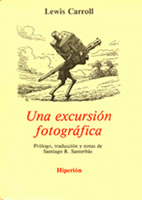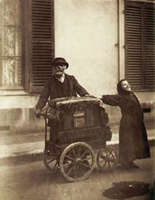
THE HOMO URBANICUS' SPHERES
Let us go then, you and I, / When the evening is spread out against the sky / Like a patient etherized upon a table; /
Let us go, through certain half-deserted streets, / The muttering retreats / Of restless nights in one-night cheap hotels /
And sawdust restaurants with oyster-shells: / Streets that follow like a tedious argument / Of insidious intent /
To lead you to an overwhelming question… / Oh, do not ask, "What is it?" / Let us go and make our visit. /
(T.S. Eliot. The Love Song of J. Alfred Prufrock)
Most of the people who are going to read these lines live in an urban environment. The city has become our place for expression and development. We assume this reality naturally since we were born.
However, almost two centuries before, when photography was born, the context was completely different because the prevailing environment was rural. The daily act of going out to the street nowadays, used to be out to the country then.
 Lewis Carroll (1832-1898), who was practically born with the photography under his arms, wrote A Photographer's Day Out in 1860. The action takes place during a working day in the country. It tells the writer about the humorous adventures of a photographer who is only interested in portraiting women called Amelie.
Lewis Carroll (1832-1898), who was practically born with the photography under his arms, wrote A Photographer's Day Out in 1860. The action takes place during a working day in the country. It tells the writer about the humorous adventures of a photographer who is only interested in portraiting women called Amelie.
Years later, by the end of that century, Eugène Atget (1857-1927), having become a wandering photographer in the streets of Paris, devotes himself to make an outstanding realistic record of the city and its inhabitants. He goes on with such work all along his lifetime until he dies in total poverty.
